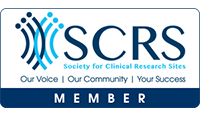According to the New England Journal of Medicine, we are still searching for best treatment options in Pediatric Migraines. The treatment options for pediatric migraines seem to be far and few between with standardization of care being unique to the child experiencing pediatric migraines. Pediatric migraine is unique, and it requires an individualized treatment plan with the aid of specialists who may be able to diagnose and treat the migraine. While professionally crafted strategies are the mainstay of effective treatment, managing your symptoms through understanding treatment options may make a difference.
So, what are the various different pediatric migraine treatment options? First, what is a pediatric migraine?
What is a Pediatric Migraine?
Migraine is a common disorder in children. Estimates indicate that 3.5–5% of all children will experience recurrent headaches consistent with migraine. Management consists of identifying triggering factors, providing pain relief, and considering prophylaxis. It is important to remember that pediatric migraines may be different and encompass a completely different disorder than a child’s headache. Please consult with your doctor if you feel your child’s headache is untreatable with the common first-line treatment options like advil or ibuprofen.
Standard Treatment Options for Pediatric Migraines
According to the American Migraine Foundation, “migraine appears to result from a genetically sensitive brain, wherein the pathways that normally conduct head pain are activated too easily.” Some researchers have hypothesized that a pediatric migraine may be a neuro-inflammatory disorder, as the activation of the head pathways are accompanied by inflammation around the blood vessel lining the brain.
Standardization of care typically involve two of the most effective classes of medications available to treat migraines:
- Non-steroidal anti-inflammatory medications (NSAIDs): Examples are ibuprofen and naproxen sodium. These medications decrease the inflammatory process.
- Triptans/ergots: These medications interrupt the chain of physiologic events that generate and sustain a migraine attack. They are designed to alleviate migraine within two to four hours, preferably in as little as one to two hours. The triptan group includes tablets and nasal sprays, as well as injectable forms. Dihydroergotamine is available in nasal spray or injectable formats; when necessary, compounding pharmacies can make other formulations.
If you feel your child is experiencing a pediatric migraine, please consult your doctor for prescription information or inquire about a clinical trial with Preferred Research Partners.
What are the triggers for Pediatric Headaches?
One of the first treatment options for pediatric migraines could also involve eliminating and recognizing dietary, environmental and psychological triggers impacting the child. Noted triggers from a review of pediatric migraines are listed below:
dietary: alcoholic beverages, caffeine excess, artificial sweeteners, tyramine (aged cheeses, smoked fish, cured meats), nitrates and nitrites, monosodium glutamate
environmental: media abuse, odors
medication: cimetidine, estrogen, histamine, hydralazine, nifedipine, nitroglycerin, ranitidine, reserpine, long-term use of nonsteroidal anti-inflammatory drugs
psychological and physical triggers: stress, anxiety, worry, depression, fatigue, fever, illness, poor sleep habits, irregular meals, fasting, hypoglycemia, dehydration. (Epure et al., 2016)
If you’re looking for treatment for your child’s pediatric migraine, please try a clinical trial for pediatric migraines here.



